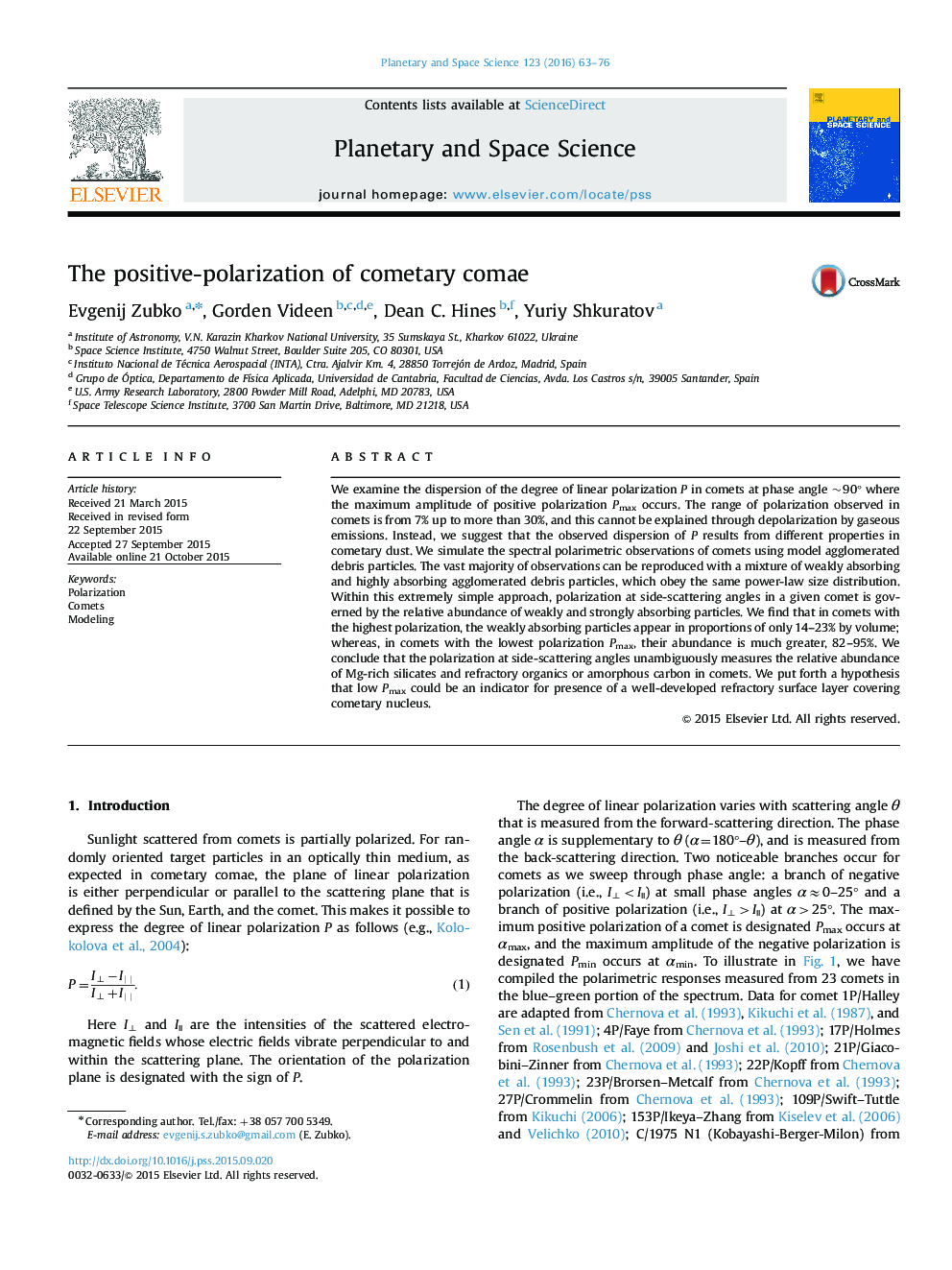| Article ID | Journal | Published Year | Pages | File Type |
|---|---|---|---|---|
| 1780839 | Planetary and Space Science | 2016 | 14 Pages |
Abstract
We examine the dispersion of the degree of linear polarization P in comets at phase angle ~90° where the maximum amplitude of positive polarization Pmax occurs. The range of polarization observed in comets is from 7% up to more than 30%, and this cannot be explained through depolarization by gaseous emissions. Instead, we suggest that the observed dispersion of P results from different properties in cometary dust. We simulate the spectral polarimetric observations of comets using model agglomerated debris particles. The vast majority of observations can be reproduced with a mixture of weakly absorbing and highly absorbing agglomerated debris particles, which obey the same power-law size distribution. Within this extremely simple approach, polarization at side-scattering angles in a given comet is governed by the relative abundance of weakly and strongly absorbing particles. We find that in comets with the highest polarization, the weakly absorbing particles appear in proportions of only 14-23% by volume; whereas, in comets with the lowest polarization Pmax, their abundance is much greater, 82-95%. We conclude that the polarization at side-scattering angles unambiguously measures the relative abundance of Mg-rich silicates and refractory organics or amorphous carbon in comets. We put forth a hypothesis that low Pmax could be an indicator for presence of a well-developed refractory surface layer covering cometary nucleus.
Keywords
Related Topics
Physical Sciences and Engineering
Earth and Planetary Sciences
Geophysics
Authors
Evgenij Zubko, Gorden Videen, Dean C. Hines, Yuriy Shkuratov,
